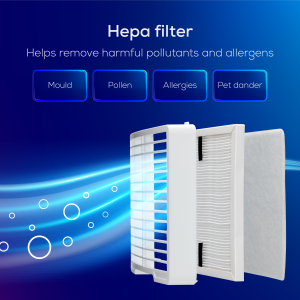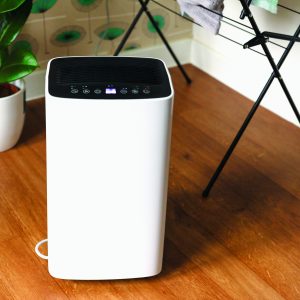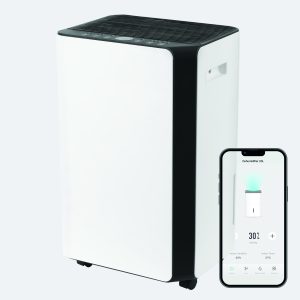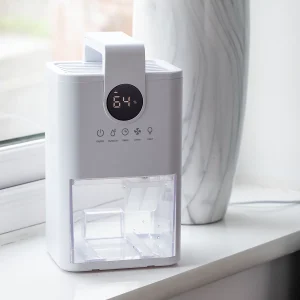
Too much humidity in your home can lead to mould, condensation, musty smells, and even damage to furniture or electronics. A dehumidifier is a practical solution that helps maintain a healthy indoor environment by drawing excess moisture from the air. However, not all dehumidifiers are built the same – different types are suited to different spaces, climates, and needs. In this guide, we explore the main types of dehumidifiers available in the UK to help you choose the right one for your home or business.
A refrigerant dehumidifier is the most common type found in UK homes, using a cold coil system to condense moisture from the air. It works by drawing in humid air through a fan and passing it over chilled coils. As the air cools, water vapour condenses into droplets, which collect in a tank or are expelled via drainage. The dried air is then reheated slightly before being released back into the room. This type of dehumidifier performs best in warm, humid environments and is ideal for everyday domestic use, particularly in centrally heated homes.
Pros:
Cons:
A desiccant dehumidifier is a type of moisture control device that uses a chemical drying agent to absorb humidity from the air, rather than relying on refrigeration. It uses a hygroscopic (moisture-absorbing) material — typically a silica gel-coated rotor — to extract water vapour from the air. As the rotor turns, a heated section dries the saturated desiccant, allowing it to continuously absorb moisture from incoming air. Unlike refrigerant models that rely on cooling coils, desiccant units don’t depend on ambient temperature, making them ideal for unheated or colder environments where other types struggle. Their ability to perform consistently in low temperatures makes them a popular choice for garages, conservatories, boats, and other cool, damp spaces.
Pros:
Cons:

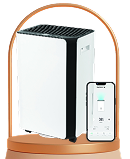
A whole-house dehumidifier is a large, integrated system designed to control humidity across an entire property, usually connected to the central heating and ventilation system. These units work similarly to refrigerant models but on a much larger scale, automatically managing moisture levels in multiple rooms at once. They’re often installed in lofts or basements and are especially useful for large homes, properties with poor ventilation, or households with health concerns related to mould and allergens.
Pros:
Cons:
A mini or portable dehumidifier is a compact unit designed for small, confined spaces such as bathrooms, wardrobes, or caravans. These typically use Peltier (thermo-electric) technology or a mini desiccant system to quietly absorb moisture from the air. Their small size makes them incredibly convenient for travel or limited use, though they lack the power and capacity of full-sized units.
Pros:
Cons:
An industrial or commercial dehumidifier is a heavy-duty unit engineered for demanding environments such as warehouses, gyms, swimming pools, and construction sites. These machines can extract large volumes of water quickly and often come with rugged, durable casings and advanced drainage options. They’re essential in places where rapid drying is critical, such as post-flood clean-ups or moisture-sensitive operations.
Pros:
Cons:
Choosing the right dehumidifier isn’t just about picking the most powerful or most affordable model – it’s about finding the one that suits your specific environment and lifestyle. From compact mini units to whole-house systems and rugged industrial machines, each type serves a unique purpose. By understanding how each works and weighing the pros and cons, you can invest in a solution that keeps your air dry, healthy, and comfortable. Whether you’re fighting damp in a single room or managing moisture across a large property, the right dehumidifier can make all the difference.
